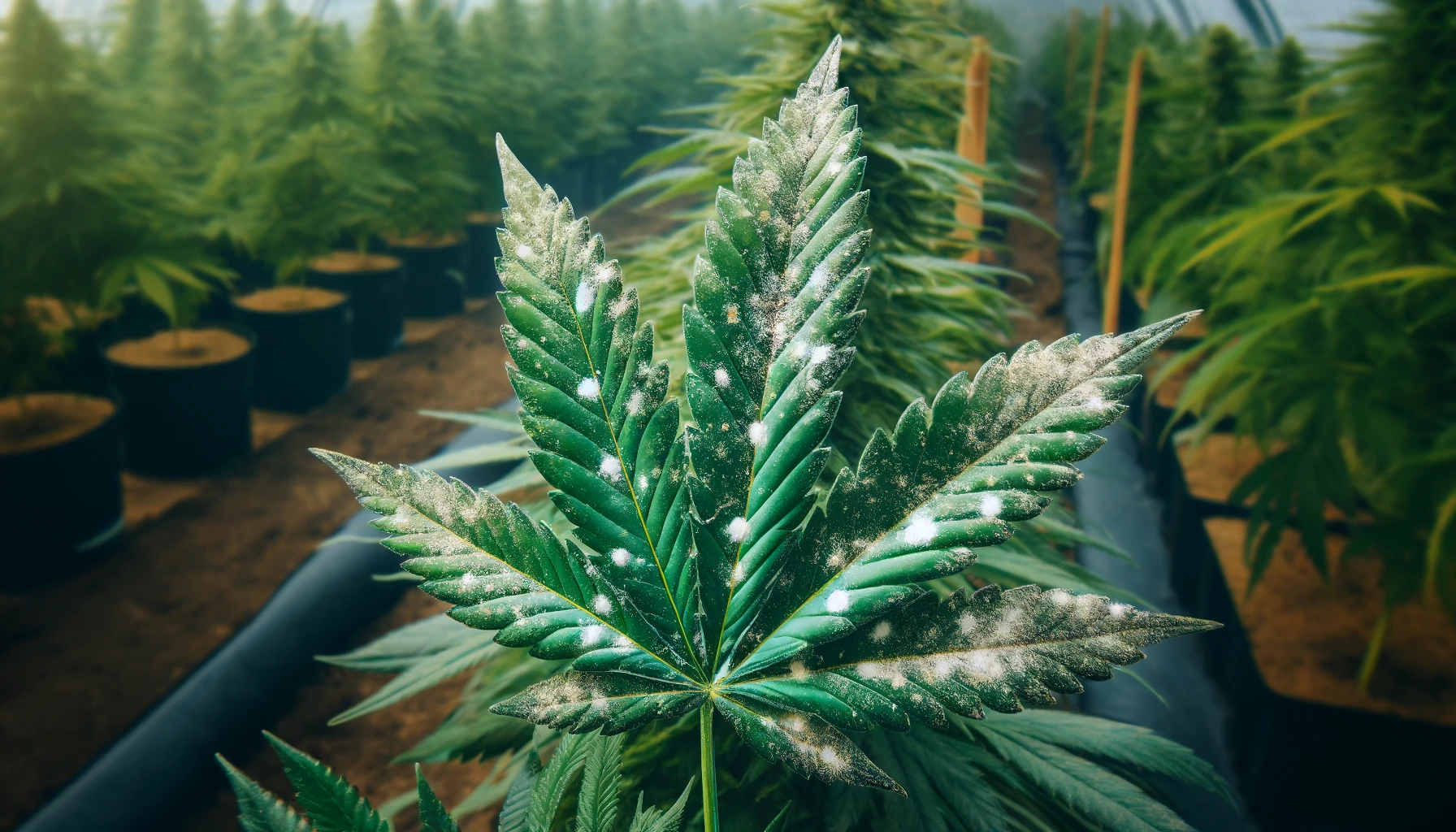Effective Organic Solutions for Spider Mites: Comprehensive Guide
Spider mites are a common and persistent pest for gardeners, particularly in indoor and greenhouse environments. These tiny arachnids can cause significant damage to plants by feeding on their sap, leading to discolored leaves, stunted growth, and reduced yields. This guide will provide an in-depth look at how to identify, treat, and prevent spider mite infestations using organic methods.
Table of Contents
| Heading | Sub-topics |
|---|---|
| Understanding Spider Mites | Life Cycle, Signs of Infestation, Types of Spider Mites |
| Why Choose Organic Treatment? | Benefits of Organic Methods, Environmental Impact |
| Identifying Spider Mite Infestations | Visual Signs, Early Detection Techniques |
| Preventive Measures | Cultural Practices, Companion Planting, Natural Predators |
| Organic Treatment Methods | Neem Oil, Insecticidal Soap, Horticultural Oil, Essential Oils, Biological Controls |
| Detailed Application Techniques | Foliar Sprays, Soil Drenches, Beneficial Insects |
| Creating a Spider Mite-Resistant Environment | Humidity Control, Air Circulation, Regular Monitoring |
| Dealing with Severe Infestations | Combining Treatments, Pruning and Disposal, Safe Use of Organic Pesticides |
| Long-Term Maintenance and Prevention | Routine Inspections, Ongoing Environmental Adjustments, Integrated Pest Management (IPM) |
| Common Mistakes to Avoid | Over-application, Ignoring Early Signs, Improper Use of Treatments |
| Advanced Organic Treatments | DIY Recipes, Advanced Biological Controls, Integrating Multiple Methods |
| FAQs | Frequently Asked Questions on Organic Spider Mite Control |
Understanding Spider Mites
Life Cycle
Spider mites, particularly the two-spotted spider mite (Tetranychus urticae), have a rapid life cycle that can make infestations difficult to control. Their life cycle includes the egg, larva, nymph, and adult stages, with a complete cycle occurring in as little as one week under optimal conditions.
Signs of Infestation
- Discolored Leaves: Yellow, bronze, or stippled leaves are common indicators.
- Webbing: Fine silk webs on the undersides of leaves or between stems.
- Leaf Drop: Severe infestations can cause leaves to dry out and fall off.
- Slow Growth: Infested plants often exhibit stunted growth and reduced vigor.
Types of Spider Mites
- Two-Spotted Spider Mite: The most common type, identifiable by the two dark spots on its back.
- Carmine Spider Mite: Typically red in color and found in greenhouses and tropical climates.
- Red Spider Mite: Common in temperate climates, appearing bright red.
Why Choose Organic Treatment?
Benefits of Organic Methods
- Safety: Organic treatments are safer for humans, pets, and beneficial insects.
- Sustainability: Environmentally friendly and sustainable over long periods.
- Non-Toxic Residue: Leaves no harmful residues on plants or in soil.
Environmental Impact
Organic treatments minimize the impact on non-target organisms and reduce the risk of pesticide resistance developing in spider mite populations.
Identifying Spider Mite Infestations
Visual Signs
Regularly inspect the undersides of leaves and look for signs such as stippling, webbing, and discolored spots.
Early Detection Techniques
- Magnifying Glass: Use a magnifying glass to inspect leaves closely.
- White Paper Test: Tap leaves over a white sheet of paper to dislodge mites, making them easier to see.
Preventive Measures
Cultural Practices
- Watering: Maintain proper watering schedules to keep plants healthy and less susceptible to mites.
- Sanitation: Remove and dispose of plant debris and weeds that can harbor mites.
- Quarantine: Isolate new plants to prevent introducing mites to your garden.
Companion Planting
Planting certain species can deter spider mites. Examples include:
- Marigolds: Repel various pests, including spider mites.
- Garlic: Known for its pest-repelling properties.
- Dill and Cilantro: Attract beneficial insects that prey on spider mites.
Natural Predators
Encourage or introduce predators such as:
- Ladybugs: Feed on spider mites and their eggs.
- Predatory Mites: Species like Phytoseiulus persimilis specifically target spider mites.
- Lacewing Larvae: Effective at consuming spider mites.
Organic Treatment Methods
Neem Oil
Neem oil disrupts the hormonal systems of spider mites, preventing them from feeding and reproducing. It also has antifungal properties.
Insecticidal Soap
Made from potassium salts of fatty acids, insecticidal soap works by breaking down the protective outer layer of spider mites, causing dehydration and death.
Horticultural Oil
Horticultural oils smother spider mites and their eggs, effectively reducing populations.
Essential Oils
Certain essential oils, such as rosemary, peppermint, and clove oil, have miticidal properties.
Biological Controls
- Predatory Mites: Introducing predatory mites can naturally reduce spider mite populations.
- Nematodes: Beneficial nematodes can be used in the soil to attack spider mites at their base.
Detailed Application Techniques
Foliar Sprays
- Neem Oil Spray: Mix neem oil with water and a few drops of mild liquid soap. Spray on affected plants, ensuring thorough coverage.
- Insecticidal Soap: Dilute according to the manufacturer’s instructions and apply directly to leaves and stems.
Soil Drenches
Apply neem oil or other organic solutions as a soil drench to target mites that may be present in the soil.
Beneficial Insects
Release predatory mites and insects in infested areas. Ensure environmental conditions are favorable for their survival and effectiveness.
Creating a Spider Mite-Resistant Environment
Humidity Control
Spider mites thrive in dry conditions. Increasing humidity around plants can deter infestations.
Air Circulation
Ensure good airflow to reduce humidity pockets where spider mites can thrive. Use fans if necessary.
Regular Monitoring
Regularly inspect plants for early signs of infestation and act promptly to control spider mites.
Dealing with Severe Infestations
Combining Treatments
Use a combination of organic treatments, such as neem oil and insecticidal soap, for more effective control.
Pruning and Disposal
Remove heavily infested plant parts and dispose of them away from your garden to prevent the spread of mites.
Safe Use of Organic Pesticides
Follow all instructions and safety guidelines when using organic pesticides. Avoid over-application to prevent plant stress.
Long-Term Maintenance and Prevention
Routine Inspections
Conduct regular inspections of your plants to catch infestations early.
Ongoing Environmental Adjustments
Continue to adjust environmental conditions, such as humidity and airflow, to make your garden less hospitable to spider mites.
Integrated Pest Management (IPM)
Implement an IPM approach by combining cultural, biological, and organic chemical controls to manage spider mite populations effectively.
Common Mistakes to Avoid
Over-application
Using too much of a treatment can stress plants and may not be more effective.
Ignoring Early Signs
Acting quickly at the first sign of spider mites can prevent severe infestations.
Improper Use of Treatments
Follow all instructions for dilution and application to ensure effectiveness and avoid plant damage.
Advanced Organic Treatments
DIY Recipes
Create your own sprays using natural ingredients like garlic, cayenne pepper, and essential oils.
Advanced Biological Controls
Experiment with introducing more exotic predatory species or using parasitic fungi to control spider mites.
Integrating Multiple Methods
Combine different organic treatments and preventive measures for a comprehensive approach.
FAQs
How often should I apply organic treatments for spider mites? Apply treatments weekly or bi-weekly, depending on the severity of the infestation and the specific product instructions.
Can I use neem oil during the flowering stage? Neem oil can affect the flavor of buds, so it’s best used sparingly during flowering. Opt for predatory mites or essential oils instead.
How can I increase humidity to deter spider mites? Mist plants regularly, use humidifiers, or place trays of water near plants to increase ambient humidity.
Are there any plants that repel spider mites? Yes, plants like marigolds, garlic, and dill can repel spider mites and attract beneficial insects.
Is it safe to use insecticidal soap on all plants? Most plants tolerate insecticidal soap well, but always test on a small area first to ensure there’s no adverse reaction.
What should I do with pruned infested plant parts? Dispose of them in sealed bags away from your garden to prevent re-infestation.
Conclusion
Organic treatment of spider mites involves a multifaceted approach, combining preventive measures, natural predators, and organic sprays. By understanding the life cycle and behavior of spider mites, you can implement effective strategies to control and prevent infestations, ensuring the health and vitality of your plants.






